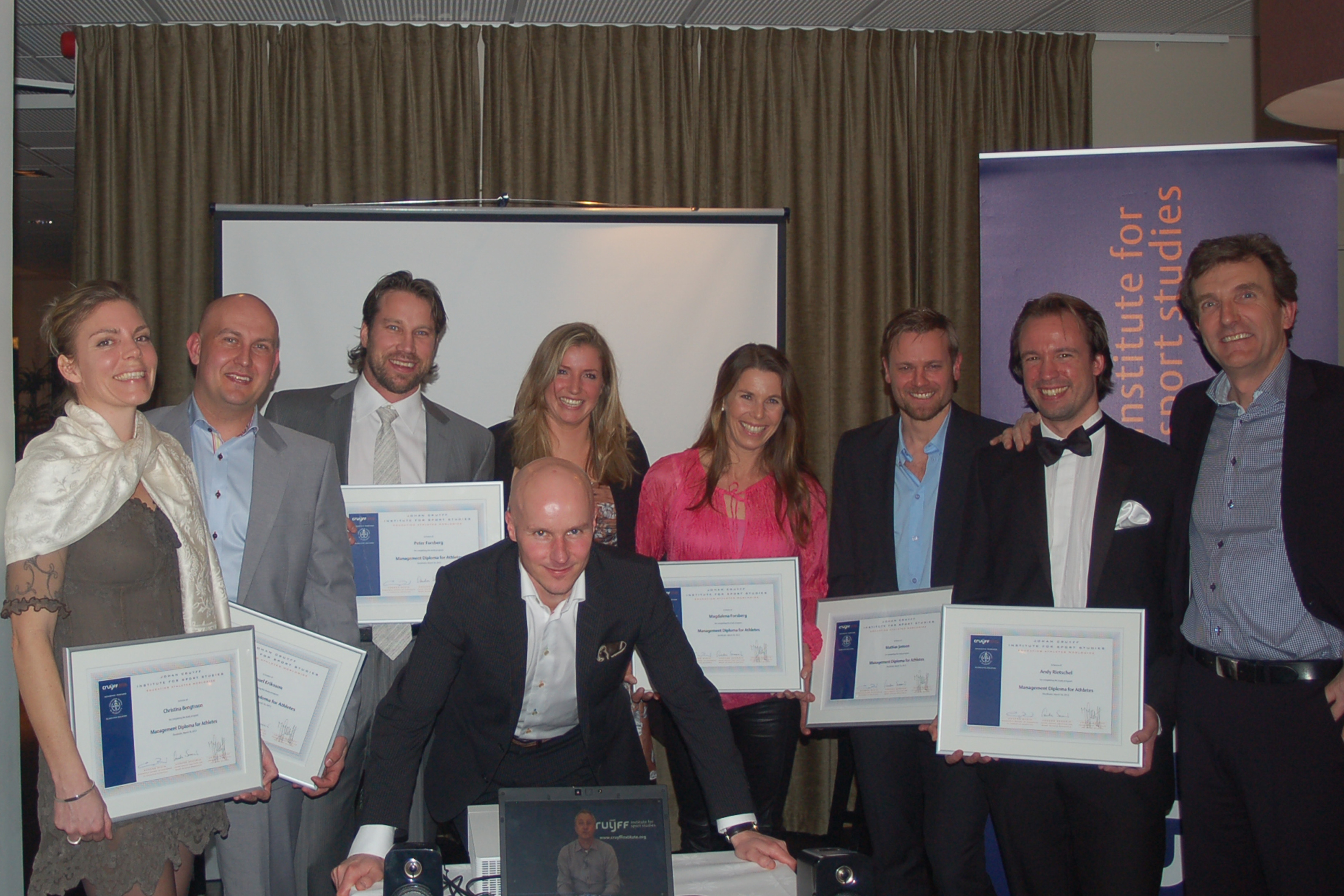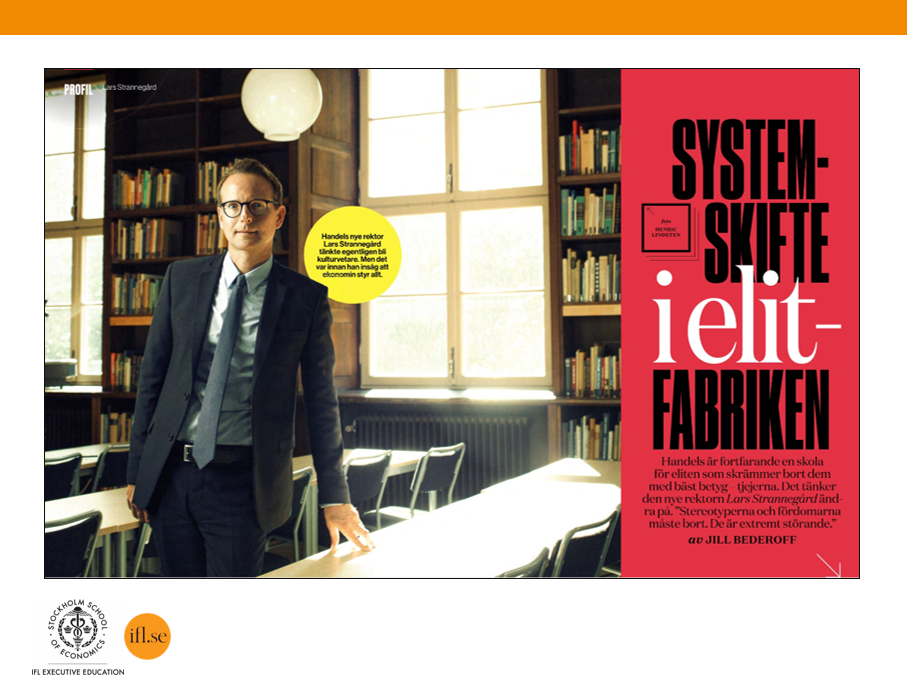Phase 1: The Early Years (2011-2015)
In terms of content, the Management Diploma for Athletes (MDA) program can be seen as a "mini-MBA program". Similar to an Executive MBA program, the participants learn about strategy, marketing, leadership, and accounting. In total. the program is 30 days, normally consisting of 2-day modules. In 2021, we were running MDA 8. Throughout all these years, Anders Sewerin and Peter Rover have done a great job as program leaders.
 Graduation for Management Diploma for Athletes Program 1. From left, Christina Bengtsson (shooting), Samuel Eriksson (golf), Peter Forsberg (hockey), Peter Rover (Program Leader), Linda Langermo (Program administrator), Magdalena Forsberg (biathlon), Mattias Jonsson (football/soccer), Andy Rietschel (ballet), and Anders Sewerin (Program Leader and CEO of Johan Cruyff Institute Sweden)
Graduation for Management Diploma for Athletes Program 1. From left, Christina Bengtsson (shooting), Samuel Eriksson (golf), Peter Forsberg (hockey), Peter Rover (Program Leader), Linda Langermo (Program administrator), Magdalena Forsberg (biathlon), Mattias Jonsson (football/soccer), Andy Rietschel (ballet), and Anders Sewerin (Program Leader and CEO of Johan Cruyff Institute Sweden)
Looking back, the MDA program was an important source of inspiration. From the conversations with different athletes, the tensions between the commercial and non-for-profit logic emerged. Regardless of sports, they all loved what they were doing, but there were huge differences between male hockey and football players who could make a fortune during their careers and many of the female athletes who barely could get by (even though they also competed at the highest international level). Many of the discussions also focused on different strategies that the respective sports had taken. Some sports had embraced commercialization while others saw "big business" as something negative that could ruin the authenticity of the sport.
In 2014, we were a bit lucky when Trygghetsrådet TRS decided to finance Executive Education programs for Club Presidents in Swedish (male) hockey and football. Trygghetsrådet TRS is a foundation that helps individuals find new careers after having been fired or given notice. Since Club Presidents/CEOs in sports are being fired quite frequently, TRS thought it was a good idea to finance an Executive Education Program. Responsible for this program was Gunnar Westling. He had previously taken his Ph.D. at SSE and worked for SSE Executive Education. Gunnar did a superb job, both at facilitating the relationship between SSE Executive Education and Trygghetsrådet TRS, and also as a Program Manager.
 The first lecture for Club Presidents on October 1, 2014. On the picture: SSE President Lars Strannegård.
The first lecture for Club Presidents on October 1, 2014. On the picture: SSE President Lars Strannegård.
The Director of the Center for Sports and Business, Martin Carlsson-Wall's first lecture was on October 1, 2014. Since sports and business were something new at the Stockholm School of Economics, Carlsson-Wall remembers how he used a clip from a newspaper article where SSE President Lars Strannegård argued that SSE needed to change and think in new ways. Now, 8 years later this change has materialized in several ways. However, at this point, Lars was quite new as President of SSE.
With the relationships that were created, we started several research projects. A key theme (which remains the same today) concerned institutional complexity and hybrid organizations. If organizations like a stock-listed football club (such as AIK Football) rely on both a commercial and a non-for-profit logic, how are they managed? What is the role of accounting and management control? Initially, we began with MS.c. theses. This way, we could collect data and try to make sense of the situation.